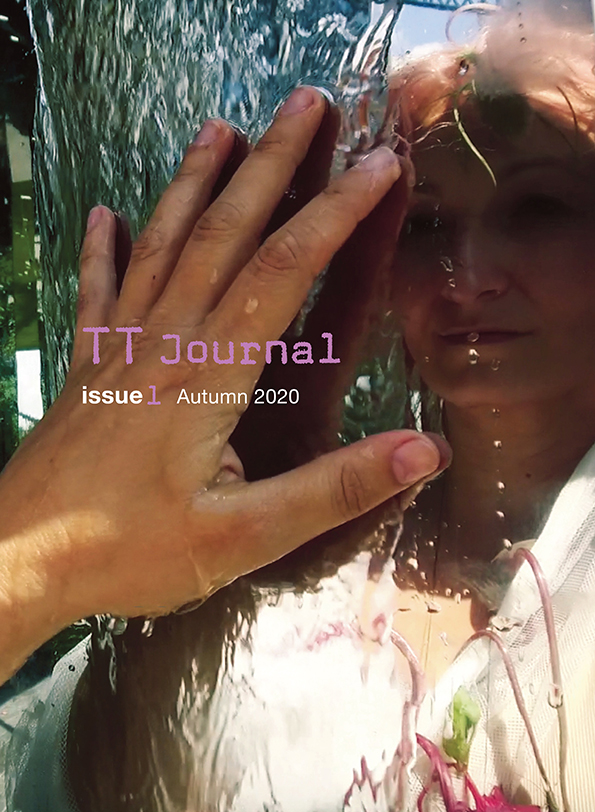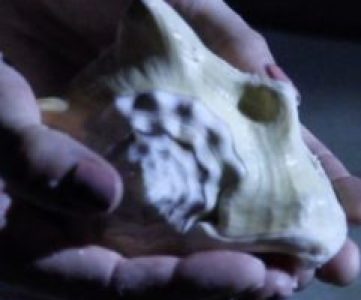TT Journal, Vol.1, ISSUE 1, 3rd November 2020
Click her for ISSUE 1: CONTENT OVERVIEW
Dear Reader,
Welcome to the first issue of our Tangible Territory journal, which comes into being partly because of this strange and abrupt transformation of our everyday reality yet is also a result of a much longer investigation. This journey consciously begun sometimes in the year 2005, as I started to explore the aesthetic and emotional potential of our most fundamental of senses: the sense of touch.
Being a filmmaker added a unique twist to the challenge as there seemed to be a paradox at the heart of my pursuit: how can I explore the importance of touch in a medium that is audio-visual?
It was the visionary Czech artist Jan Švankmajer, who showed me it is indeed possible to translate tactile experiments (made over the 7 years of being banned from filmmaking by the communist party) into audio-visual language of cinema. The impact of his films is viscerally felt, and experiencing them can act as a magnifying glass to the fingers.
Fast forward 15 years, which for me included 4 years of PhD studies exploring tactility and embodiment in moving image, and we find ourselves here, in 2020, in the midst of a pandemic.
When I got sick in mid-March and lost my sense of smell, the world around me was already recoiling from physical proximity, with faces behind masks and signs everywhere to keep 2 meters distance. I realised then that the virus somehow threatened to deprive us of the joys and pleasures of our proximity senses, with their rich dimension of experience, directly related to emotion, memory and general sense of connection. The move away from physical closeness begun to push us further towards reliance on audio-visual technology to keep in touch, delivering to us a virtually mediated, two-dimensional world.
I began to feel it is my duty somehow, as an artist who has had the privilege of thinking on these questions and exploring them in my creative practice for many years, to draw attention to what is happening, and to invite others I got to know with overlapping concerns, to reflect on these themes, from their own unique perspectives.
I wanted a space where these accelerated transformations, this new reality of our sensory imbalance is examined and explored, where attention can be drawn to what is endangered, what needs protecting. But I didn’t want this to just be about the fear of loss or mourning alone. I also wanted to know about the ways creative people have found to deal with these new limitations, what imaginative means they employed to adapt to change, which, after all, is the condition of all life.
The result is a wonderful array of personal, artistic, philosophical and scientific reflections and analysis, of thinking through walking and through making, a celebration of the creative process, in its multi-sensory and embodied dimension, interwoven with places and spaces the authors traversed and occupied.
As the Czech geologist and philosopher Václav Cílek points out in his essay, humanity’s past is intertwined with reoccurring waves of wars, plaque and subsequent sense of renewal: destruction and death is followed by celebration of beauty and harmony in arts, of spiritual renewal and hope. It is strangely comforting to understand this larger context, to know that what we are experiencing right now is far from unique to our times. Disease has always been part of humanity’s reality, it is perhaps just our modernity, as philosopher Carsten Friberg highlights, that makes us experience this particular event with a new kind of sensitivity. In artist Jan Švankmajer’s view, our situation is dire: Švankmajer has little respect for a civilisation that seems set on self-destruction. In his view, we must reject rationalism and return to the world of magic, which is more authentic.
As it is, we are all feeling a sense of grief for the sensual universe that seems to be fading away from our reach, as professor of astrostatistics Roberto Trotta describes beautifully in his personal observation. Thankfully, there is also plenty to do to defy these tendencies, by becoming more conscious of them and being more proactive about how we use all our senses to engage with our surroundings.
Professor Charles Spence of the Crossmodal Research Laboratory provides us with a highly topical original contribution which gives a comprehensive overview of the way our more emotional senses (of touch, taste and smell) have been affected by the pandemic and suggests a technique of ‘sensehacking’ to restore balance to our lives.
There are many ways we can keep the flame of creative energies burning: like establishing new structures and routines, which can open up space for reflection, the way writer Gabriel Josipovici decided, when committing to A 100 Days project.
We can also take walks, together while alone, and use technology to connect with others across the world, in our absurd pursuit for a collective experience, from our own separate bedrooms, as artist Lucy Lyons explores. Or we can carry a stick and get know a city by walking alone, without a need for GPS, as shown by poet and writer S J Fowler. The important thing is to remember to laugh while doing this: at the absurdity of everything including ourselves, as laughter is a great reminder of our bodies, it lightens the burden of anxiety and makes us feel connected.
When we attend to our environment, as landscape architect Johanna Gibbons reveals to us in her contribution, even the inner city reaps generous rewards and our urban landscape is one to treasure for a number of reasons. Additionally the trees remind us that we are intertwined with the world that we occupy, which we are fully dependent on, we are an extension of. By paying attention to our senses, we are not only increasing our awareness of ourselves, we are also training ourselves to become more sensitive to our environment.
Under no circumstances must we allow ourselves to become a version of the two-dimensional beings on the screen, like the character in my Self-Isolation dinner film, who is trapped within it, experiencing the world by imitation only. We must not become shaped by the tools we use, the binary code of computers, unable to comprehend ambiguity, as composer Rob Kaplowitz cautions. We must constantly re-examine the working habits these tools impose on us, like always sitting still, forgetting we have a whole body at our disposal. Composer and artist Steph Singer gives us some handy tips on how to deal with zoom meetings, from her experience of working with dancers. But she also provides an example, through her own practice, of the powers of creative adaptability to changing situations, the theme of Vaughn Tan’s uncertainty mindset: a state of being receptive, flexible, voluntarily open to learning and transformation.
One tool at our disposal, which is essential, is imagination.
We must actively celebrate imagination.
We must work on preserving (even wild) parts of our imagination as an ecological project (this is an idea I heard mentioned in passing at a reading in Waterstones few years ago, which stayed with me).
Imagination is not an escape from our reality, as it is often presented to us now, in our consumer society. Imagination is an active principle that allows us to shape our reality, to imagine that the world can be different to what it is, shaped semi-consciously by the forces seemingly beyond our reach.
Roz Driscoll draws attention to the fact that imagination lies at the basis of all perception, as our brain constructs our reality from external and internal impressions. Our reality is far less solid than we want to believe: it is closer to the liminal land of Daniel & Clara’s films, where sensory reality merges with memories, daydreams.
To come back to the beginning of this text – I feel it is vital to remember, as my PhD taught me, that even when watching and listening on a screen, we are also always participating with our whole bodies. Our bodies must not be left behind. In 2013 I was lucky to meet Charles Spence and some of his team at the Crossmodal research laboratory in Oxford. It was then that I learned about ‘crossmodal interactions’ or the way our senses are in constant dialogue and influence each other. Often misnamed as synesthesia (which is involuntary and individual), crossmodal interactions are part of the reality of us all. The senses work together. We too must talk across modalities of human experience, across disciplines and nationalities, to try and strive for a more fully rounded experience of the world.
I hope you enjoy this first issue as much as I enjoyed putting it together.
Please subscribe to the blog by email if you’d like to stay connected with the project and show your support.
Each article and essay here will also be featured on a weekly blog.
Should you like to contribute, respond to some of the texts, please do not hesitate to be in touch. This platform is about shared explorations, dialogue, being connected.
Thank you,
Tereza Stehlíková, London, 3rd November 2020
Below is a link to the content and all the articles:
My gratitude goes to all the contributors, some of whom wrote original contributions while others adapted chapters from their books for our journal. Thank you also to Susan Hibberd and Roz Driscoll for proof reading sections of the text and to Jon Wozencroft for the cover design, which features Tereza Kamenická, as Ophelia, from one of my films.


Thanks Tereza
This looks incredible. I can’t wait to explore this issue.
With kindest regards, Kaye
Thank you very much Kaye.
I hope you enjoy it!
Tereza